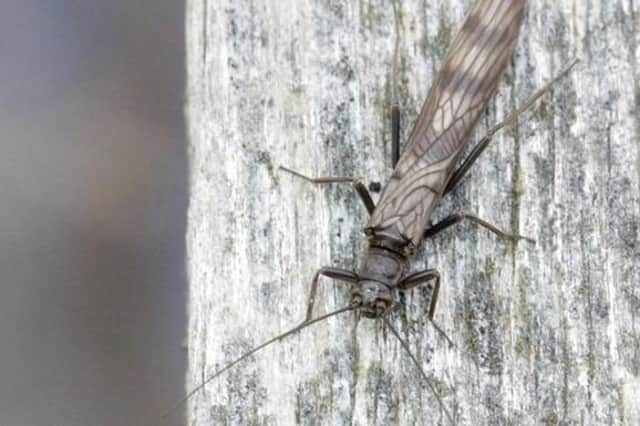Helping to spot rare sun-worshipping insect


The Northern February Red Stonefly was first found in the River Clyde in 1838, but now it mainly occurs in northern Scotland, particularly the north-east and the Highlands.
Outside of Scotland, it has only been found in two other rivers, the Usk in Wales and the Wye near Hereford, where it is now thought to be extinct.
Advertisement
Advertisement
This small, native, endemic stonefly is brown in colour. The female has three dark bands across its wings, as well as dark wing tips, whilst the male is short-winged and either cannot fly well or is unable to fly. Adults have long antennae, a similar length to their bodies, which look like a (very small) string of beads.
The elusive insect is known to enjoy ‘basking’ on fence posts along river banks – and spotting them doing this has been identified as a useful survey technique.
Buglife Scotland is asking members of the public to help improve mapping of the rivers in which this stonefly lives and this is the perfect time of year to spot them.
To get involved, simply take a picture of any potential stoneflies you come across and send it to [email protected] or tweet it to @buglifescotland. More information is available online.
Advertisement
Advertisement
Craig Macadam, Buglife’s Conservation Director, said “The Northern February Red is a really special species; we’re incredibly lucky to have it in some of our rivers.
"Now is the perfect time to spot them, particularly on fenceposts along riverbanks so look out for them as they bask in the winter sunshine. Stoneflies need clean, cold water which makes them important indicators of good water quality, but climate change means that some species are under threat.
"By getting more people spotting stoneflies we can start to fill in the gaps in our understanding of where the Northern February Red stonefly lives, this will help with current and future work to help this species to survive.”
Understanding of the range and behaviour of the Northern February Red is already much improved thanks to volunteers sending in records in previous years. But with more spotters conservationists would be able to gain a better picture of their distribution and habits.